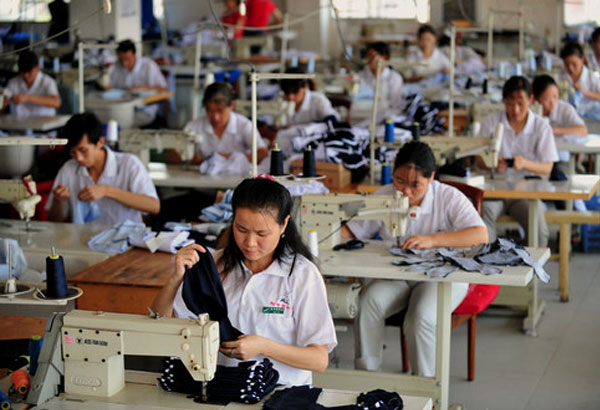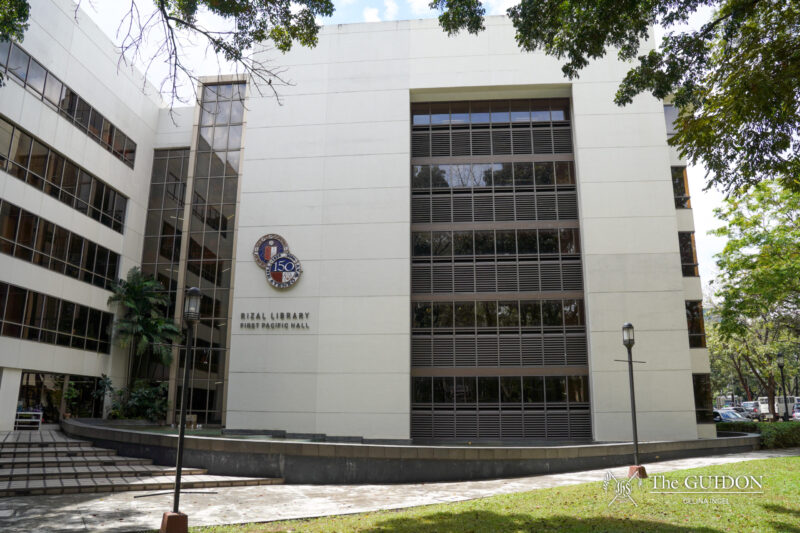Spurred by a surge in economic activity, the Philippines will accelerate further this 2015, despite reduced expectations from forecasts on its projected gross domestic product (GDP) growth rate.
Recently, the World Bank (WB) lowered expectations regarding the GDP growth rate from its previous calculation of 6.4% down to 6%. In 2014, the average GDP growth remained at 5.8% for the first three quarters, a downgrade from the government’s target range of 7-8%.
During the Philippine Economic Prospects 2015, an economic briefing by the Ateneo Eagle Watch held last January 22, the senior fellows of the Ateneo Eagle Watch predicted a possible downtrend on economic growth. The Ateneo Eagle Watch, an initiative by the Ateneo Center for Economic Research and Development, aims to provide information on the fast-changing Philippine economic landscape.
Assuming the lack of government spending and lowered outputs from manufacturing sector, growth would settle at 5.4% while the target range would move down to 5.7-6.3%. Senior fellow and Economics Department Professor Alvin Ang, PhD assessed 2014’s performance as a “base scenario,” meaning that the economy “is already moving at a faster pace of growth” in the absence of external factors.
Robust growth
Since 2002, the Philippine economy has grown at an average of about 5%, a feat described by the WB as “significantly higher than the rate achieved in the previous two decades.” In a document from Asian Development Bank, the average growth rate reached 4.8% in 2000-2010 while the decade prior to it garnered 2.8%.
Dubbed as the “rising tiger” of Asia, the Philippines capped off 2014 with a 6.9% growth during the fourth quarter, now emerging as the second fastest growing economy in the continent after China. Subsequently, the sectors of agriculture, industry and services showed substantial growth at the end of last year despite a slowdown in production from the previous quarters.
Growth in the agricultural sector rose by 4.8% in the fourth quarter, significantly higher than the 0.9% recorded from the same period in 2013, which was due to a rebound in the production of crops and the usage of high-yielding seed varieties.
The services sector grew by 6%, same as the full-year average for 2014. Likewise, the industry sector climbed up to 9.2%, where manufacturing remained the largest contributor.
“Manufacturing is about 20% of GDP and [it] has significant forward and backward linkages that could pull the rest of the economy,” Ang said.
The government has also claimed that 1.65 million Filipinos have been employed since April last year. According to a recent economic update from the WB, the 2013 Annual Poverty Indicator Survey also found that the bottom 20% of the population’s real income grew faster than the rest of the populace. This confirmed that the conditional cash transfer program under Department of Social Welfare and Development was reaching out to the poor, as reflected by the reduction of poverty incidence by three percentage points.
Adjusting to economic challenges
Competence is necessary for the Philippines to smoothen its transition against economic challenges brought about by “uneven global growth,” according to Bangko Sentral ng Pilipinas Governor Amando Tetangco Jr.
Ang shared the same sentiment, saying, “The continuing imbalance of the growth in the US, Europe and Japan will dictate the global economy, and [thus affect] the Philippines.”
Despite the changing economic landscape, the Philippines has managed to maintain its robust growth given the influx of investments and productivity from the various sectors. However, Tetangco strongly urged that national government spending be increased to boost GDP up to its target range.
Likewise, Ang suggested that infrastructure spending “need not only to double but even quadruple” to further support growth and address its serious backlogs. “[The] government has picked the slacked private investments in the past, [and] it continues to have serious backlog in infrastructure spending so it needs to support growth,” he explained.
Underspending contributed to the GDP slowdown in the third quarter of 2014, as pointed out by Karl Kendrik Chua, the WB’s senior economist in the Philippines.
The Department of Budget and Management (DBM) Secretary Florencio Abad described this underspending as “a confluence of both unanticipated and deliberate events.” He attributed this mainly to Super Typhoon Yolanda (international name Haiyan) and the “structural impediments” encountered between budget planning and executing the reconstruction of affected areas.
Moreover, the issues of the Priority Development Assistant Fund and the Disbursement Acceleration Program heightened the matter.
Nonetheless, Philippine Socioeconomic Planning Secretary Arsenio Balisacan noted that the underspending was just a “temporary setback” from the adjustments with reforms in public financial management.
With 2015 being the last full year in President Benigno “Noynoy” Aquino III’s term, the administration has introduced reforms to help fix underspending. According to an article in Business World, DBM’s proposal include “allowing big-ticket agencies to outsource pre-construction activities, hiring full-time Bids and Awards Committees for larger implementing agencies, and granting contractors of public works to easily borrow money from banks to accomplish as many projects as possible.”
Aside from infrastructure, Ang cited the inclusion of a competition policy, removal of bottlenecks in business and investments, and support for agriculture as matters that the president should prioritize.




